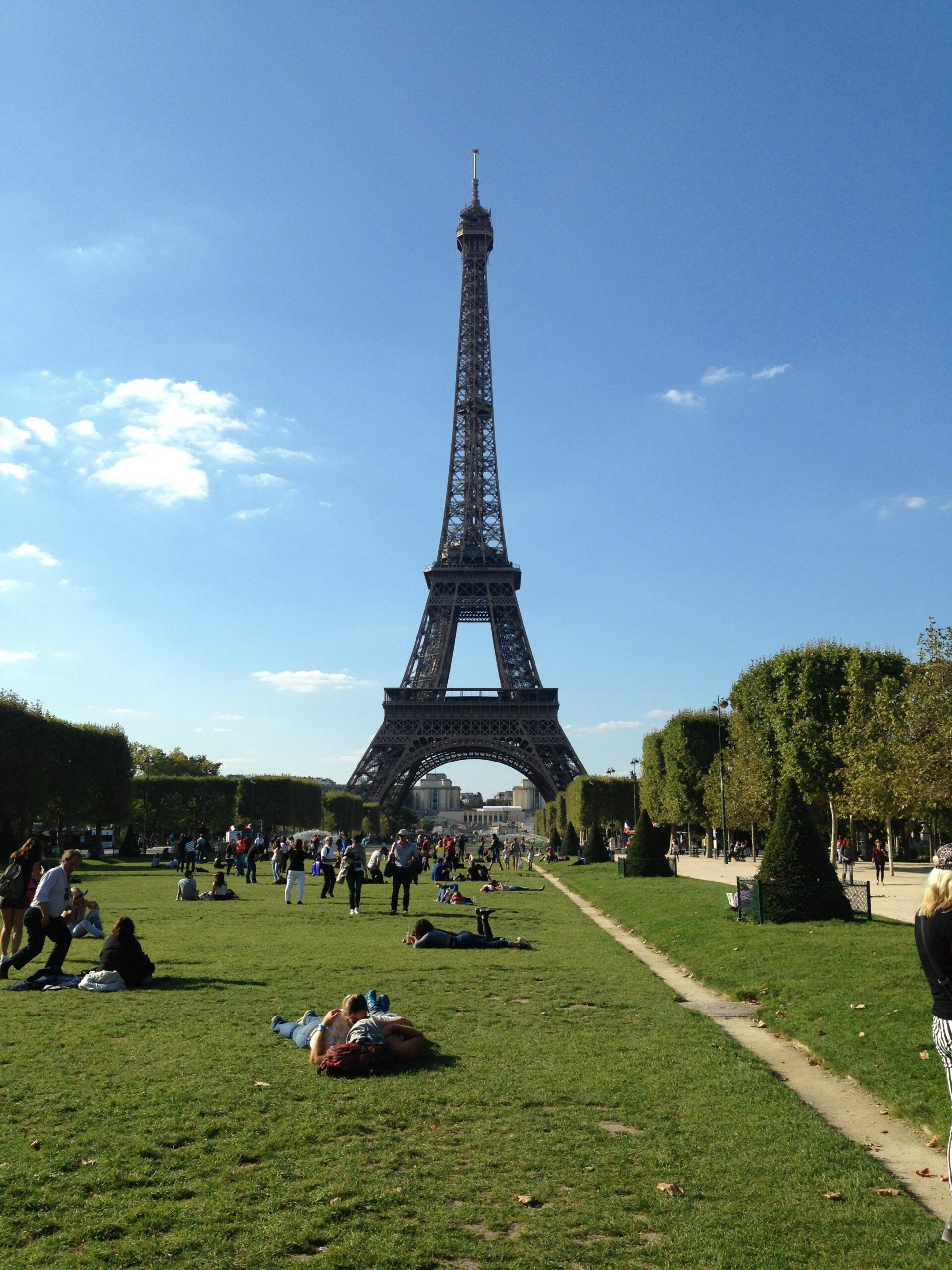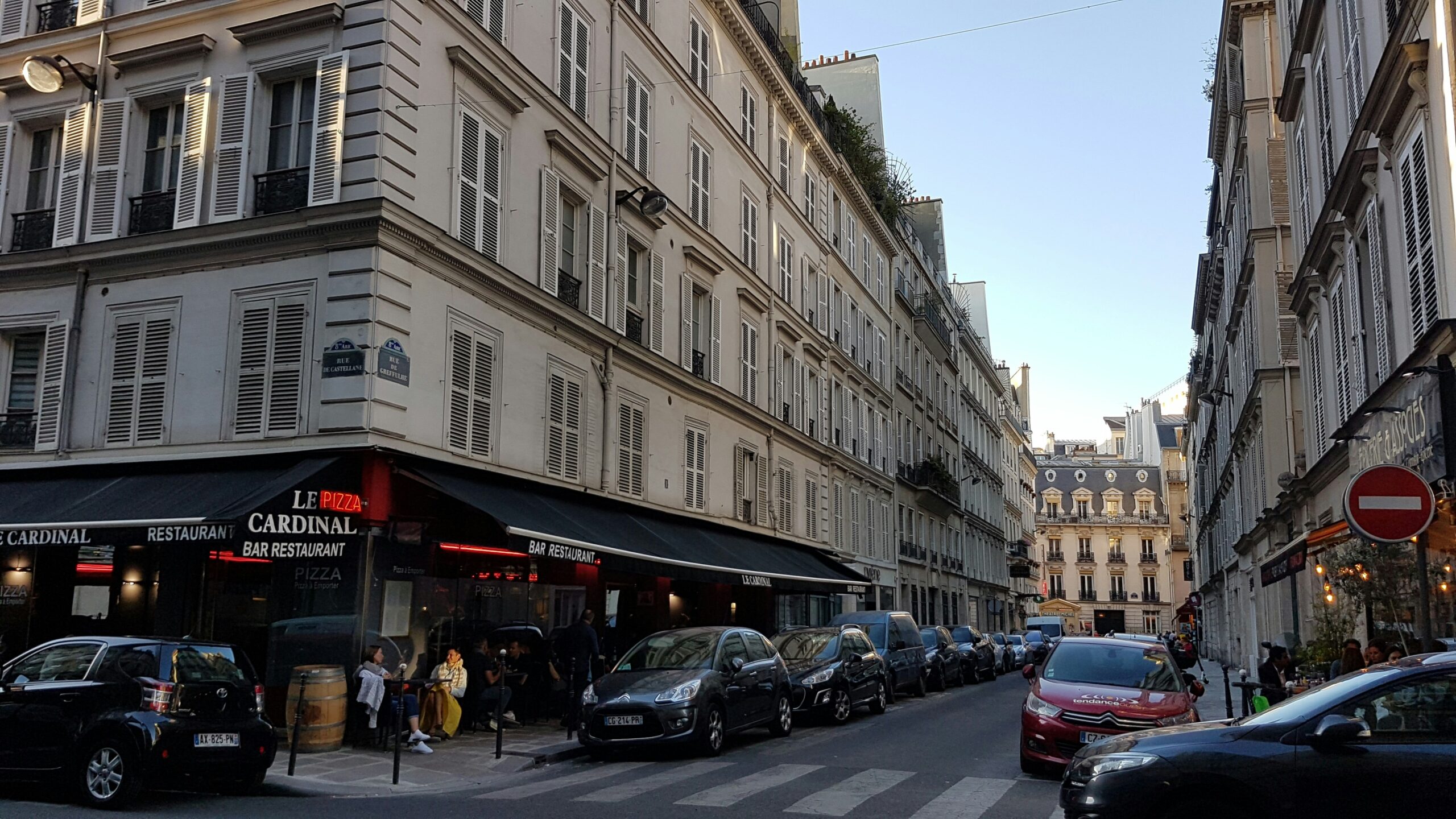Introduction to Paris’s Geography
Paris, often referred to as the City of Lights, is situated at a latitude of approximately 48.856614 degrees north. This geographical location places it in a temperate zone characterized by four distinct seasons, allowing the city to experience a blend of climatic conditions that significantly influence its cultural and social life. The latitude of Paris contributes to its mild summers and cool winters, which are pivotal for the city’s residents and visitors alike, affecting outdoor activities, tourism, and even gastronomic experiences that change with the seasons.
The strategic positioning of Paris not only gives it favorable weather patterns but also allows for a unique interplay of light throughout the year. The longer summer days and the soft golden hues of sunlight during the fall create an enchanting ambiance that has inspired countless artists, writers, and musicians. This geographical aspect encapsulates the charm and allure of the city, making it a vibrant hub for creativity and culture.
Furthermore, Paris’s latitude situates it in close proximity to other major European cities, making it a central point in the continent’s cultural and economic networks. This significance is reflected in its role as a leading destination for international trade and tourism, a testament to its historical and modern appeal. The interplay between Paris’s geographical features and its urban landscape reflects a rich tapestry of history, culture, and innovation that has evolved over centuries.
Understanding the geographical context of Paris, especially its latitude, allows one to appreciate the intrinsic qualities that make this city a perennial favorite among travelers and residents. As we delve deeper into the specific aspects of Paris’s geography, we will uncover how these features define the city, contributing to its reputation as one of the world’s most captivating urban environments.
Understanding Latitude: What It Means for a City
Latitude is a fundamental geographic coordinate that specifies the north-south position of a point on the Earth’s surface. Measured in degrees, it ranges from 0° at the equator to 90° at the poles. Each degree of latitude corresponds to approximately 69 miles or 111 kilometers, allowing for an understanding of the Earth’s curvature and its impact on various locations. The importance of latitude extends beyond mere coordinates; it plays a crucial role in defining a city’s geographical characteristics, including its weather patterns, climate, and even ecology.
The concept of latitude significantly influences the climate of Paris. The city’s latitude is approximately 48.8566° N, placing it further north compared to other major European cities. This geographical positioning subjects Paris to a temperate maritime climate, characterized by moderate seasonal variations in temperature and precipitation. Consequently, the latitude’s effect leads to warm summers and cool winters, shaping the lifestyle and activities of its inhabitants throughout the year.
Additionally, the latitude of Paris also affects its daylight hours across different seasons. In summer, longer daylight hours allow for extended periods of sunlight, promoting outdoor activities and tourism. Conversely, during winter, shorter days result in less sunshine and a greater reliance on artificial lighting, which can influence daily routines and social behaviors. Furthermore, the ecological implications of latitude cannot be overlooked; varying plant and animal species thrive at different latitudinal zones, contributing to the region’s biodiversity.
In essence, understanding latitude is crucial for grasping the complexities of urban climate and ecology. For cities like Paris, the geographical positioning encapsulates the essence of what makes them unique, providing insights into their weather, culture, and environment, and highlighting the interplay between geographical factors and human habitation.
The Latitude of Paris: 48.856614
The city of Paris, renowned globally as the City of Lights, is situated at a precise latitude of 48.856614 degrees North. This geographic positioning not only places Paris centrally within Europe but also influences various climatic and environmental factors that define the city’s character. Being located at this latitude, Paris experiences a temperate maritime climate, characterized by mild winters and warm summers. The average temperature ranges from approximately 3°C (37°F) in January to around 25°C (77°F) in July, allowing residents and tourists to enjoy a diverse range of outdoor activities throughout the year.
One significant implication of Paris’s latitude is its effect on daylight hours across different seasons. During summer, the long daylight hours provide ample opportunity for extended exploration of the city’s renowned landmarks, such as the Eiffel Tower and the Louvre Museum. Conversely, in winter, the shorter days result in limited sunlight, with the sun rising as late as 8:45 AM and setting as early as 4:30 PM in December. This seasonal variation in daylight influences not just daily activities but also contributes to the cultural atmosphere of Paris, as residents adapt their routines and lifestyles to the changing light.
Additionally, the latitude of Paris plays a critical role in its agricultural practices, particularly in the production of beverages and cuisines that define French gastronomy. The seasonal shifts encourage a variety of local produce to flourish, enriching the culinary landscape. Overall, the latitude of 48.856614 situates Paris in a unique position that enhances both its environmental and cultural dynamics, allowing it to thrive as a vibrant hub for art, history, and innovation.
Paris’s Climate: A Product of Its Latitude
Paris, positioned at a latitude of approximately 48.8566° N, experiences a mild oceanic climate characterized by warm summers and cool winters. The city’s geographic location significantly influences its weather patterns, yielding four distinct seasons that contribute to a variety of outdoor activities throughout the year. The interplay between latitude, continental influences, and ocean currents creates a unique atmospheric condition for this iconic metropolis.
During the summer months, particularly from June to August, Paris enjoys average high temperatures ranging from 23°C to 30°C (73°F to 86°F). These balmy conditions encourage numerous outdoor events, including picnics along the Seine and open-air concerts. Rainfall is relatively moderate during summer, with monthly averages around 60-70 mm, allowing for ample sunny days to explore the city’s many outdoor attractions.
Autumn, spanning from September to November, welcomes cooler temperatures, averaging between 15°C and 20°C (59°F to 68°F). This season is marked by a gradual decline in temperatures and an increase in rainy days, particularly in October and November, which can contribute to Paris’s reputation for romantic ambiance with its colorful foliage and moody skies. Visitors during this time might enjoy leisurely strolls through picturesque parks like Jardin du Luxembourg.
Winter in Paris, lasting from December to February, reveals average temperatures ranging from 3°C to 7°C (37°F to 45°F). While snowfall is not common, it can occasionally blanket the city, creating a stunning winter landscape. Despite the chill, winter festivities, including Christmas markets, attract visitors eager to experience the festive spirit amidst the city’s historical architecture.
Spring arrives around March and lasts until May, with temperatures gradually rising from 10°C to 20°C (50°F to 68°F). This season is known for its blooming flowers and vibrant cultural activities, making it an ideal period for outdoor explorations. Rainfall remains moderate, allowing Parisians and tourists alike to enjoy pleasant walks along the riverside or in the city’s gardens.
Outdoor Activities in Paris: Embracing the Mild Climate
Paris, known as the City of Lights, boasts a mild climate that enhances the appeal of outdoor activities throughout the year. Residents and visitors alike can take advantage of the pleasant weather to explore the city’s rich cultural landscape through a variety of experiences. One of the most popular ways to enjoy the outdoors is by strolling along the iconic boulevards, such as the Champs-Élysées or Rue de Rivoli. These avenues are lined with beautiful trees, charming cafes, and shops, making them ideal for leisurely walks while absorbing the vibrant atmosphere of the city.
Parks are another hallmark of outdoor life in Paris. The city is home to numerous parks and green spaces, each offering a unique charm. Jardin du Luxembourg, for example, provides a serene environment with its manicured gardens, statues, and blissful fountains. Visitors can relax on a bench while watching a game of pétanque or take a romantic stroll surrounded by blooming flowers. Similarly, Parc des Buttes-Chaumont, with its dramatic cliffs and waterfalls, offers a more rugged outdoor experience where one can hike and explore nature.
Furthermore, Paris hosts a variety of outdoor events, many of which are influenced by its diverse culture. Seasonal markets and open-air festivals can be found across the city, where locals gather to partake in art, music, and cuisine. Programs such as “Paris Plages” transform the banks of the Seine into sandy beaches, providing entertainment and relaxation. Such initiatives embody the spirit of Paris and create an inviting atmosphere for both locals and tourists to bond over shared experiences.
In summation, the mild climate of Paris creates ample opportunities for various outdoor activities. Whether it is wandering through the city’s famous boulevards, enjoying park life, or participating in lively cultural events, the city offers a delightful way to embrace the outdoors while experiencing its captivating charm.
Cultural Life in Paris: Shaped by Geography
Paris, known as the City of Lights, is profoundly shaped by its geographical location, particularly its latitude of approximately 48.8566° N. This positioning influences not just the climate, but also the cultural dynamics that make Paris a unique hub of art, literature, and cuisine. The temperate climate, characterized by mild winters and warm summers, fosters an environment conducive to outdoor gatherings, which in turn enhances the city’s vibrant street life and artistic expression.
The latitude of Paris contributes to varied daylight hours throughout the year. Longer evenings in the summer invite people to enjoy open-air events, from street performances to gallery exhibitions, reinforcing the city’s reputation as an epicenter of creativity. Artists and writers have long drawn inspiration from the shifting light, which can evoke distinct moods and atmospheres across different seasons. This dynamic relationship between nature and creativity has led to the emergence of various artistic movements, including Impressionism, which first flourished in the salons and streets of Paris.
Moreover, the geographical setting has a profound impact on culinary experiences in the city. The climate allows for a diverse range of fresh produce, which forms the cornerstone of French cuisine. Seasonal dishes that highlight local ingredients can be found in bistros and markets throughout the city. This culinary culture is not just about food; it embodies the social fabric of Parisian life, where meals are often community gatherings. Chefs and culinary artists utilize the city’s geographic advantages to create dishes that celebrate regional flavors while also pushing creative boundaries.
In summary, the latitude of Paris is more than a mere geographic marker; it significantly shapes the cultural essence of the city. From art and literature to culinary delights, the geographical features make Paris an unparalleled hub of creativity and innovation, contributing to its status as a global cultural capital.
Why Geography Matters for Travelers
Understanding a city’s geographical features, including its latitude, is crucial for travelers seeking to optimize their experience. Paris, known as the City of Lights, is located at a latitude of approximately 48.8566° N. This positioning affects various climatological and environmental aspects that can significantly influence a traveler’s experience.
Firstly, knowing the latitude of Paris helps visitors anticipate seasonal variations in weather, which is vital for planning their itineraries. For instance, the city experiences a temperate oceanic climate characterized by warm summers and cold winters. Travelers aiming to explore outdoor attractions such as the Luxembourg Gardens or take leisurely strolls along the Seine River may prefer visiting during the spring (April to June) or fall (September to October) when temperatures are mild and pleasant. Conversely, winter months often bring lower temperatures, which could deter some outdoor activities.
Moreover, the geographical positioning of Paris offers diverse daylight hours throughout the year. During the summer months, daylight can extend up to 16 hours, providing ample time for travelers to explore the city’s landmarks. Understanding this aspect can encourage tourists to maximize their sightseeing and allow for extended periods of discovery. In contrast, shorter winter days could necessitate earlier planning for activities to ensure that travelers can enjoy the city’s attractions before nightfall.
In addition to planning around climate and daylight, a traveler’s awareness of Paris’s geographic location can deepen their appreciation of the historical and cultural intricacies of the city. This knowledge may also inspire exploration of nearby regions, facilitated by Paris’s well-connected transportation network. Overall, familiarizing oneself with Paris’s latitude not only informs practical travel decisions but also enriches one’s overall exploration of this iconic city.
Conclusion: Embracing the Latitude of Paris
In this exploration of Paris, we have delved into the significance of the city’s geographic latitude, which is approximately 48.8566° N. This positioning is not merely a set of coordinates but a crucial element that influences a variety of aspects of life, culture, and travel within the city. The latitude of Paris plays a pivotal role in determining the climate, providing a temperate environment that attracts visitors year-round and enhances their travel experience. The distinct seasons experienced in Paris offer visitors a glimpse into the city’s beauty throughout the year, from lush, green springs to the stunning hues of autumn.
Moreover, the city’s latitude enhances the quality of light, which has captivated artists and inspired countless works of art throughout history. The unique geographical positioning enhances the vibrant colors of sunsets and sunrises, contributing to the enchanting ambiance that Paris is renowned for. Travelers and locals alike cherish these moments, creating memorable experiences shaped by the interplay of light and landscape.
Understanding the latitude of Paris also invites visitors to appreciate the rich cultural heritage that has developed in response to its geographical characteristics. The city’s layout, the style of its architecture, and even the culinary offerings reflect a deep connection to the climate and geography. As travelers embrace the latitude of Paris, they uncover layers of history, culture, and natural beauty that amplify their experiences.
In conclusion, recognizing the latitude of Paris is essential for fully appreciating what the city has to offer. Its geographical traits shape not only the weather but also the very essence of Parisian life. Whether one is wandering through the streets, enjoying a café, or indulging in art and history, the latitude inevitably enhances the journey through the City of Lights.
Further Resources: Learning More About Paris
To enhance your understanding and appreciation for Paris, numerous resources are available that cover the city’s rich history, diverse culture, stunning geography, and practical travel tips. Whether you are planning a visit or simply wish to indulge in the enchantment of the City of Lights from afar, these resources can be invaluable.
One excellent starting point is the extensive online platform of the Musee d’Orsay. This museum website not only showcases its impressive collection of Impressionist and Post-Impressionist masterpieces but also provides insights into the historical significance of these works in the context of Paris’s artistic evolution. Moreover, the Paris Convention and Visitors Bureau offers comprehensive information on local attractions, accommodations, dining options, and unique itineraries that cater to various interests.
For those who prefer literature, renowned travel guides such as Rick Steves Paris and Lonely Planet’s Paris delve into both well-trodden tourist paths and hidden gems. They provide valuable tips, maps, and cultural context that elevate your trip experience. Additionally, the book “The Paris Perfect Cookbook” offers insights into Parisian culinary culture along with authentic recipes that allow you to savor the flavors of the city at home.
Documentaries are also a compelling way to engage with Paris. The acclaimed “Paris: The Luminous Years” explores the city’s artistic legacy during a transformative period in history, while the series “Inside Paris” provides a fascinating look at the city’s architecture and everyday life. These visual narratives can deepen your understanding of what makes Paris so special.
In conclusion, by utilizing these resources, you can significantly enrich your knowledge and appreciation of Paris, reinforcing the city’s reputation as a cultural capital and a mesmerizing destination for travelers worldwide.

We share information about current trends and stories of people all around the world.



